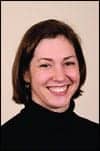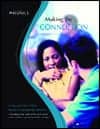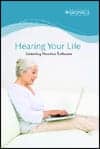|
Many dispensing professionals are surprised to see that clients with thresholds in the severe range can make excellent candidates for cochlear implants. This article provides an overview of implant candidacy, the current prevailing ideas on what makes for the most successful CI users, and how aural rehabilitation plays an important role in the implant process.
If you have ever had a client tell you that one center turned him down for a cochlear implant while another gave approval, you have witnessed how the application of cochlear implant criteria may vary among medical facilities within the United States. During cochlear implant device trials for approval by the Food and Drug Administration (FDA), strict selection criteria are used for study control. The FDA evaluates the research and approves medical devices that demonstrate safety and efficacy.
After a device is approved by the FDA, a surgeon and cochlear implant center use the selection criteria from the study, but they may also augment some criteria based on experience, insurance requirements, or individual circumstances. For example, some clinics use primarily the audiometric guidelines set by the FDA while others use a team approach, or rating scale such as the ChiP (Child Implant Profile),1 to evaluate if a child would benefit from a cochlear implant audiometrically, as well as developmentally, academically, and socially.
Candidacy evaluations are complex and include at least threshold, hearing aid benefit, and medical evaluations. These evaluations are routine at cochlear implant centers; however, many clients struggle with hearing aids for years before being informed that they might consider undergoing a cochlear implant evaluation. Referring a client for a complete cochlear implant evaluation may be the most important referral you ever make.
Threshold Evaluation
An integral part of the cochlear implant team, the audiologist, has the vital task of conducting the audiometric portion of the evaluation, including unaided threshold testing and the hearing aid benefit evaluation. Many clinicians are surprised to see that clients with thresholds in the severe range can make excellent candidates for cochlear implants.
For adults, the audiometric results are typically obtained through standard procedures. For children, the FDA has approved the HiResolution Bionic Ear for those with profound, bilateral sensorineural deafness, as well as the cochlear implants developed by Cochlear Corporation and Med-El. Behavioral and evoked responses may be used to determine threshold levels depending on the child’s age and abilities. A cochlear implant center may request previous test results to review in conjunction with the results of their own evaluation.
Hearing Aid Benefit
Though audiometric thresholds are important, evaluating hearing aid benefit, or how a person functions with appropriately fit hearing aids, is the key to determining an individual’s potential to obtain more benefit from a cochlear implant. Hearing aid users who employ amplification consistently, yet are faced with daily living struggles—such as heavy reliance on lipreading, inability to detect all the sounds of speech, significant difficulty communicating on the phone, and inability to communicate effectively in the presence of background noise—may be experiencing limited hearing aid benefit.
Cochlear implant clinics use a variety of tests to determine whether an individual’s level of hearing aid benefit meets the criteria for cochlear implantation. Adults who correctly respond to up to half of the target words on an open-set sentence recognition task while wearing their hearing aids meet the criteria for “limited hearing aid benefit.”
|
Example of FDA Criteria for Cochlear Implantation For adults (18 years+): • Severe to profound, bilateral sensorineural hearing loss (>70 dB HL) • Severe or profound hearing loss • Limited benefit from appropriately fit hearing aids, defined as scoring 50% or less on a test of open-set sentence recognition (HINT sentences in quiet) For Children (12 months–17 years): • Profound, bilateral sensorineural deafness • Little or no benefit from appropriately fitted hearing aids. In younger children (<4 years of age), lack of benefit is defined as a failure to reach developmentally appropriate auditory milestones measured using the Infant-Toddler Meaningful Identification Scale (IT-MAIS) or MAIS, or <20% correct on open-set word recognition test (such as the Multi-syllabic Lexical Neighborhood Test, or MLNT). In older children, lack of hearing aid benefit is defined as scoring <12% on a difficult open-set word recognition test (such as the PBK) or <30% on an open set sentence test (HINT-C) |
Children also undergo hearing aid benefit evaluation; however, determining benefit for younger children may be more challenging. Limited hearing aid benefit for children less than 4 years old is defined as failure to reach developmentally appropriate auditory milestones.
Test materials that focus on listening behaviors reported by parents are commonly used to monitor auditory development in very young children. For children able to complete higher level tasks, open set word recognition tasks are used. In children 4 years old or older, limited hearing aid benefit is evaluated using open-set word or sentence recognition tests. A hearing aid benefit trial is not required for children whose radiological evaluation shows signs of cochlear ossification so that implantation can proceed rapidly. Cochlear implant centers work with the child to conduct a complete and age-appropriate hearing aid benefit evaluation.
Medical Evaluation
Individuals undergoing a cochlear implant candidacy evaluation must also have medical and radiological evaluations (CT scan or MRI) with an otolaryngologist specializing in cochlear implantation. The evaluations are necessary to determine if the individual has any conditions that are contraindications to cochlear implantation, such as absence of the auditory nerve. Other conditions the surgeon needs to be aware include Mondini malformation, auditory neuropathy, and Large Vestibular Aqueduct Syndrome (LVAS), although individuals with these conditions can be excellent cochlear implant candidates. The surgeon will also advise on appropriate vaccinations as well as pre- and postoperative care.
In addition to audiological, hearing aid benefit, medical, and radiological testing, candidates may also undergo a variety of other evaluations including speech and language pathology, educational placement, psychology, early intervention, and social work. These additional evaluations are sometimes required by insurance providers and are useful for setting expectations of a candidate’s post-implant performance.
Setting appropriate expectations is an important part of the candidacy process. Although there are no guarantees with cochlear implantation, it is vital for individuals or parents of a child with hearing loss to have appropriate expectations before making the final decision to undergo cochlear implantation. Interestingly, the audiogram is less helpful in setting expectations than age, amount of auditory stimulation prior to implantation, and other individual factors.
Setting Expectations: Factors Influencing Success with Implants
When a clinician begins to tell me the background story of a client with an implant, they almost always begin by sharing the person’s age at the time the hearing loss was identified and their age at implantation. For children, the importance of early identification and intervention has been well documented.
Age at implantation may make a tremendous difference in performance expectations. Researcher Anu Sharma, PhD, at the UTD/Callier Center and others have discovered that the same is true for our auditory system. Though, for years, clinicians and parents have been reporting that children implanted younger do better with their devices, Sharma’s landmark studies2-4 demonstrate evoked cortical responses within the normal range for children implanted prior to 3.5 years of age. These normal responses were not achieved by children implanted at older ages, providing evidence of neurological differences based on age at implantation.
While Sharma’s studies have been focused on recording differences in neural activity, others have shown that children implanted at younger ages make more progress in speech perception and speech production than children implanted at an older age.5,6
For adults, chronological age is not as important as the amount of time between reaching severe or profound levels of hearing loss and receiving a cochlear implant. Individuals who have had short-term hearing loss can anticipate an easier transition to hearing with a cochlear implant than those who have had long-term deafness.
|
Getting the Goods on Aural Rehabilitation • Development scales and assessment tools. Information for children and families, including a list of scales of development and assessment tools, can be found at http://clerccenter.gallaudet.edu/ciec/resources-scales.html and www.agbell.org. • Hearing Your Life Rehabilitation Software. Based on a program developed at House Ear Institute, this computer-based interactive course for school-aged through adult cochlear implant users has eight different listening activities. The program scores and tracks progress over time. $189.99; (800) 678-2575. • IT-MAIS. Infant-Toddler Meaningful Identification Scale for auditory evaluations of children under 4 years of age. Free from Advanced Bionics at: www.cochlearimplant.com/professionals/rehabmaterials.asp. • Online training events. Free CEUs covering a variety of topics on cochlear implants for children and adults. www.cochlearimplant.com/professionals. • Outcomes reports. To read more about cochlear implant outcomes for children and adults: www.bionicear.com/support/getconnected/stories.asp. |
The amount of auditory stimulation and primary communication mode prior to implantation are other factors that affect post-implant outcomes. When accessing a candidate’s amount of auditory stimulation prior to the cochlear implant, the audiologist considers the degree of residual hearing, the length of time a person has had a severe hearing loss, and use of the auditory system for daily listening. Individuals who communicate orally—including most postlingually deafened individuals—typically are able to utilize the speech information transmitted by the implant easier than those who primarily use manual or visual communication modes. Both children and adults who have had maximized auditory stimulation while focusing on their aural abilities can anticipate more speech recognition with the cochlear implant, although lack of auditory experience does not exclude a person from candidacy.
The cochlear implant team will also consider other factors that may impact outcomes with a cochlear implant, such as other health or handicapping conditions, learning disabilities, structure of the cochlea, educational setting, and consistency of auditory device use. Special conditions and circumstances do not bar a person from candidacy, but are important considerations when predicting levels of success.
However, even experienced clinicians who take into account all the factors for expectations are sometimes surprised with an individual’s performance. Some reasons, such as neural survival, are difficult to account for prior to implantation. Performance also varies based on the type and amount of post-implant aural rehabilitation.
Aural Rehabilitation
Following activation, the brain must relearn, or learn for the first time, to connect sounds with meaning. In the past, adults with strong expectations for hearing well with a cochlear implant were often told they did not need any aural rehabilitation. Today, even individuals who quickly and easily adjust to the new signals from an implant may find that structured professional or self-directed therapy enhances their skills or helps with complicated listening tasks.
Professionally directed therapy is mandatory for children learning language for the first time. However, unlike days of the past when therapy rooms were reserved only for children, many adults are also benefiting from structured therapy. Adult cochlear implant users may seek a therapist to help with a specific skill, such as talking on the phone or music enjoyment. Those newly activated, as well as those whose skills have reached a plateau, may benefit from the sessions. Professional directed therapy can be conducted by a speech pathologist, audiologist, or auditory-verbal therapists.
Clinicians can also support cochlear implant users by recommending self-directed aural rehabilitation programs. Users benefit from simple listening instructions such as practicing daily listening, using audio books, exploring auditory Web sites, and keeping a hearing journal. Professionally created self-directed aural rehabilitation programs for independent practice at home are also good to recommend. Programs such as Hearing Your Life and Making the Connection are designed provide important opportunities for listening practice at almost every auditory skill level. These aural rehabilitation programs are designed not only to improve listening abilities, but also empower cochlear implant users as they progress through listening-skills levels ranging from basic discrimination to auditory comprehension and music appreciation.
References
1. Hellman SA, Chute PM, Kretschmer RE, Nevins ME, Parisier SC, Thurston LC. The development of a Children’s Implant Profile. Am Ann Deaf. 1991;136(2):77-81.
2. Sharma A, Dorman M, Spar A. A sensitive period for the development of the central auditory system in children with cochlear implants: Implications for age of implantation. Ear and Hearing. 2002;23(6): 532-539.
3. Sharma A, Dorman M, Spahr A. Rapid development of cortical auditory evoked potentials after early cochlear implantation. NeuroReport. 2002;13(10):1-4.
4. Sharma A, Dorman M, Spahr A, and Todd N. Early cochlear implantation allows for normal development of cortical auditory pathways. Ann Otol Rhinol Laryngol. 2002;111(5):38-41.
5. Tye-Murray N, Spencer L. Acquisition of speech by children who have prolonged cochlear implant experience. J Sp Hear Rev. 1995; 38 327-337.
6. Waltzman S, Cohen NL, Gomolin, RH, Green JE, Shapiro WH, Hoffman RA, Roland JT Jr. Open-set speech perception in congenitally deaf children using cochlear implants. Am Jour Otolaryngol. 1997;18(3):342:9.
Correspondence can be addressed to HR or Edie Gibson, AuD, Mann Biomedical Park, 25129 Rye Canyon Loop, Valencia, CA 91355; e-mail: [email protected].
| Related Topics on HR Onlinen “Audio Players and Cochlear Implants,” by Edie Gibson (Mar 2006 HR). • “Fitting and Evaluating a Hearing Aid for Recipients of a Unilateral Cochlear Implant: The NAL Approach,” by Teresa Ching et al (Parts 1 & 2 in Aug & Sept 2004 HR). • “Cochlear Implants and Education of the Deaf Child,” by Ann E. Geers (May 2003 HR). • “Cochlear Implants and Hearing Instruments: Do They Mix?” by Marsha Simons-McCandless (Nov 2000 HR). • Research by Anu Sharma, PhD: “Marion Downs lecture presents new research on pediatric assessment methods” (May 2005 HR News). Also see: “A Visit to UTD/Callier Center” (Oct 2002 HR). • “Cochlear Implants for Children Mark Their 25th Anniversary: Controversies and Successes” and “HR Interviews…Laura Eisenberg,” by Karl E. Strom (August 2005). |







